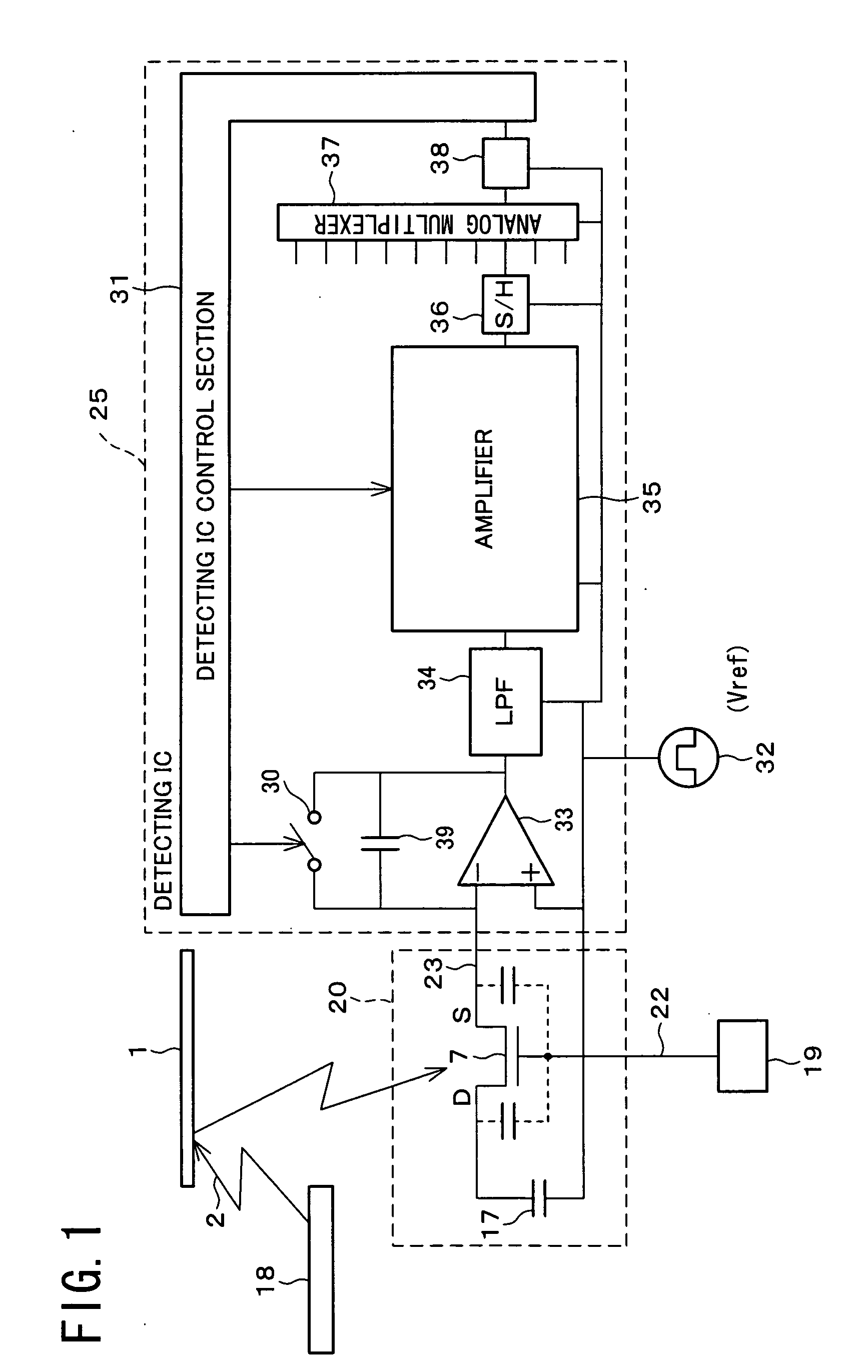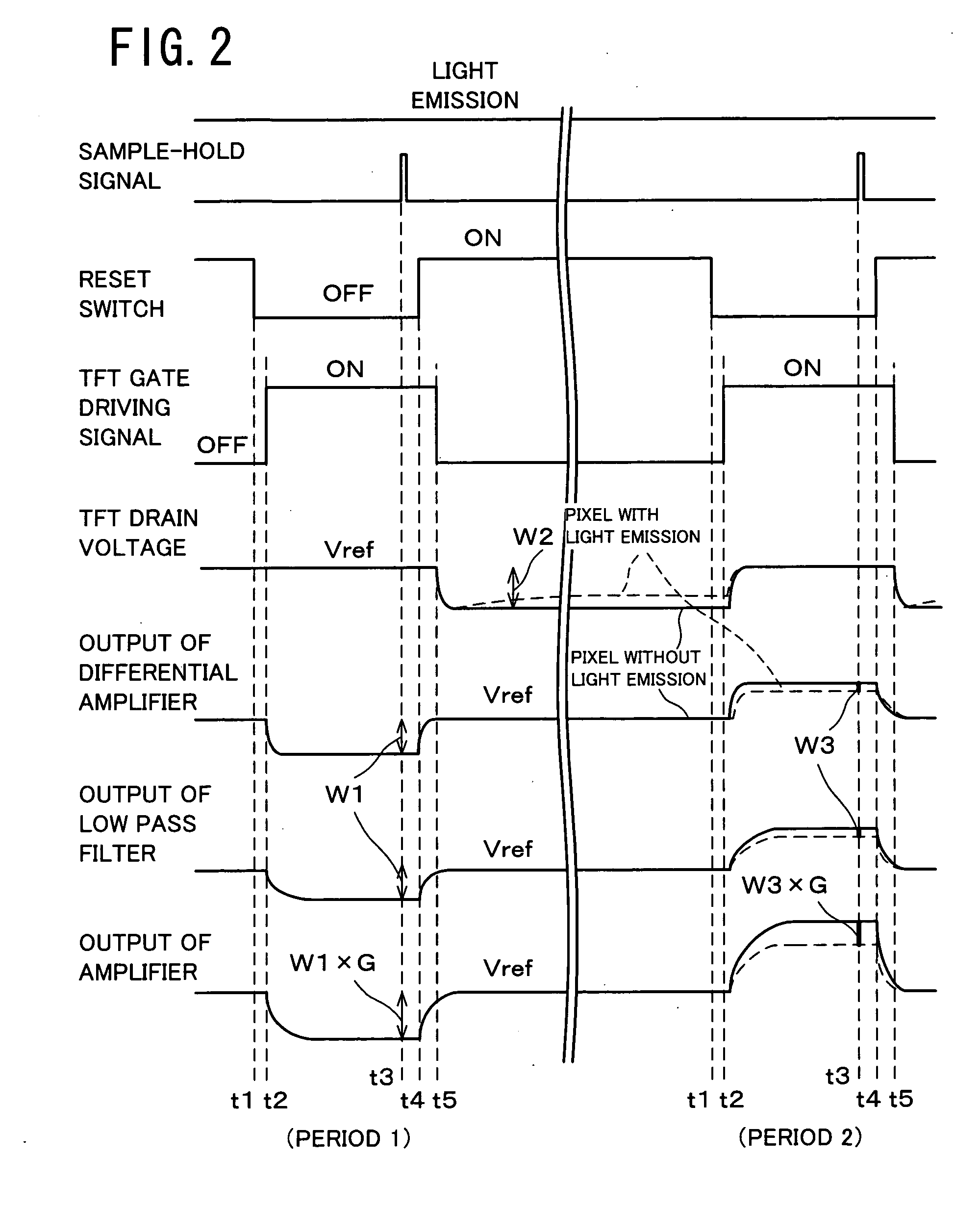Method for detecting photoelectric conversion amount and photoelectric converter, method for inputting image and device for inputting image, two-dimesional image sensor and method for driving two-dimensional image sensor
a technology of conversion amount and conversion amount, applied in the field of photoelectric converters, can solve the problems of reducing the speed of reading images, unable to reduce the size and weight of apparatus as desired, and none of them have not yet been used in practical applications, so as to reduce the size of photosensors, simplify the pixel structure, and improve the effect of resolution
- Summary
- Abstract
- Description
- Claims
- Application Information
AI Technical Summary
Benefits of technology
Problems solved by technology
Method used
Image
Examples
first embodiment
[0109] The following descriptions will explain one embodiment of the present invention.
[0110] Before explaining a method for detecting a photoelectric conversion amount, a photosensor applicable to a photoelectric converter of the present invention and a two-dimensional image sensor adopting the photosensor will be explained.
[0111] The photosensor basically has the structure of the inverse stagger type thin film transistor (TFT) (Here, the stagger type thin film transistor may be adopted, provided that an upper gate electrode is made of a transparent material). Specifically, as illustrated in FIG. 3, a phototransistor 7 is made up of a transparent dielectric substrate (transparent substrate) 9 made of glass, for example, a bottom gate electrode 11 made of chrome (Cr), etc., formed on the transparent dielectric substrate 9, and a bottom gate dielectric film (protective film) 13 made of silicon nitride (SiN) formed so as to cover the bottom electrode 11 and the dielectric substrate ...
second embodiment
[0158] Another Embodiment of the present invention will be explained. For convenience in explanations, members having the same functions as those of the second embodiment will be designated by the same reference numerals, and thus the descriptions thereof shall be omitted here. The same structures shown in FIG. 5 and FIG. 6 are adopted in the present embodiment.
[0159] The structure and the operation of the photosensor in accordance with the present embodiment will be explained in reference to FIG. 7 and FIG. 8. FIG. 7 is block diagram schematically showing the structure corresponding to one pixel of another photoelectric converter in accordance with the present invention. FIG. 8 is a timing chart showing a detection operation in the photoelectric converter shown in FIG. 7.
[0160] As illustrated in FIG. 7, the photosensor in accordance with the present embodiment is characterized in that an electrode of the auxiliary capacitance on the opposite side of the TFT drain of the auxiliary...
third embodiment
[0179] A still another embodiment of the present invention will be explained. For convenience in explanations, members having the same functions as those of the second embodiment will be designated by the same reference numerals, and thus the descriptions thereof shall be omitted here. The same structures shown in FIG. 5 and FIG. 6 are adopted in the present embodiment.
[0180] The structure and the operation of the photosensor in accordance with the present embodiment will be explained in reference to FIG. 7 and FIG. 10. FIG. 10 is a timing chart showing a detection operation in the photoelectric converter shown in FIG. 7.
[0181] As illustrated in FIG. 7, the photosensor in accordance with the present embodiment is characterized in that an electrode of the auxiliary capacitance on the opposite side of the TFT drain of the auxiliary capacitance is driven by a voltage (CS electrode drive voltage 40) which is different from the reference voltage 23. Other than the foregoing, the struct...
PUM
 Login to View More
Login to View More Abstract
Description
Claims
Application Information
 Login to View More
Login to View More - R&D
- Intellectual Property
- Life Sciences
- Materials
- Tech Scout
- Unparalleled Data Quality
- Higher Quality Content
- 60% Fewer Hallucinations
Browse by: Latest US Patents, China's latest patents, Technical Efficacy Thesaurus, Application Domain, Technology Topic, Popular Technical Reports.
© 2025 PatSnap. All rights reserved.Legal|Privacy policy|Modern Slavery Act Transparency Statement|Sitemap|About US| Contact US: help@patsnap.com



